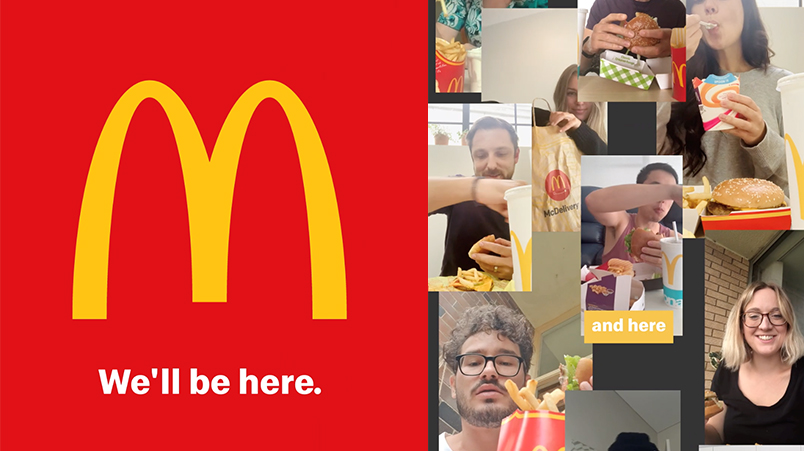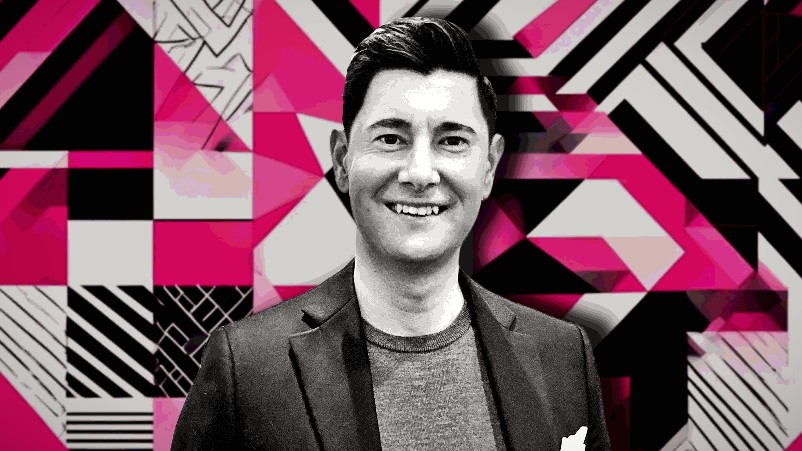Creative cray: UGC, stock libraries up; big budget shoots slashed 90%; production to 'decouple'

DDB MD Priya Patel: "A benefit of long client tenures...is having huge archives of assets to access. We can move at pace, digging out old footage that can be adapted to create new work."
Traditional TV and high-end video shoots have been iced and brand creative and messaging is turning to quick, low cost options - sometimes up to 90% lower. A post-COVID carve-up of agency creative services and consolidated production units is likely to accelerate.
What you need to know:
- Agencies forced to adapt to how they approach creative briefs, as COVID restrictions limit larger shoots
- Bigger reliance on user-generated content (UGC), animation, stock photo libraries and existing content
- Some argue it will change the way brands view creative with cheaper work viewed as equally effective to pre-COVID production values
- Current messaging is tied to a "how can we help" attitude rather than product; others still focused on crisis management
- Despite reports of some agencies experiencing growth of 30% prior to the crisis, it has "significantly diminished" as brands cancel shoots and pull activity
- Some industry players claim this will only accelerate a trend to "decoupling" creative development and ideas from production, which has been on the rise for six months
Pause hit on big budget
Two weeks ago the CEO of WPP AUNZ's centralised Hogarth production unit, Justin Ricketts, was managing shoots for global brands whose productions in London and Europe were shelved due to the COVID-19 outbreak.
Now as the pandemic has consumed much of the market locally from media spend to employment, creative and production are facing similar pressures.
Government restrictions are forcing the creative community to work from home as gatherings have now been limited to only two people, unless essential, forcing ad shoots and big brand productions to come to a grinding halt.
Ricketts says maintaining production continuity is showing as the second most serious challenge for marketers across the world as they adapt to the numerous issues that the virus has created.
However, he says clients may now see opportunities to better manage their creative work by trialling under-utilised content generation techniques and tools.
"It’s allowing clients to try all these new pieces of innovative content that they previously may have been closed off too," Ricketts says. "Already in the early stages, we know some brands are recognising that the quality is still strong and has cost a tenth of the price and then been turned around, in some cases, in under 24 hours."
Ricketts says areas such as UGC, animation, stop motion and stock libraries will all see more activity as brands look to adjust from a cost and restriction point of view.
Ahead of the curve
DDB Sydney boss Priya Patel says her agency has been reacting rapidly for key clients like Westpac and McDonalds, which need urgent and bespoke COVID response communications.
She says last week, when the restrictions were slightly looser, DDB was able to set up a quick shoot within a day and turn around new footage which will be incorporated with old work.
"We were able to record voiceovers and edit remotely as we have both the staff and equipment set up at home," Patel says. "A benefit of our long client tenure across different businesses is having huge archives of assets to access. We are therefore able to move at pace, including digging out old footage that can be adapted to create new work."
Agencies are also discussing alternative payment methods with clients, which would see creative and production teams do as much pre-shoot work as possible while in quarantine and then billed accordingly. This could include wardrobe and locations checks and other pre-production tasks being managed remotely, with the shoot date then rescheduled for a date when restrictions are lightened.
Not an excuse to compromise creativity
CHE Proximity Chief Creative Officer Ant White says while creative agencies "are up against it", there are dangers in everything becoming "UGC, a manifesto or a montage".
"That’s what we are seeing right now. Hats off to anyone who has been that reactive and gone out and made something because they’ve put their neck out and made a stand in the world to help," he says. "However, there is only going to be a certain amount of time that we are going to be able to all look the same when doing that style of messaging."
White says COVID might change how agencies approach things for the next six months but believes the real test will be if teams can create work that doesn’t look to be "compromised by the times" and the restrictions that go alongside it.
"We may find ways of better-doing things, whether that’s for less or more efficiently but it still has to maintain a level of craft, it can’t be simply because it worked at one point in time. It shouldn't become a reason that we settle for less once this ends either," White says.
He says in the meantime, brands that outspend those who can’t afford to, or elect not too, will discover a competitive and creative edge, provided they are sensitive to the situation and have a clearly defined message of providing help, not driving sales.
"It's not to be cut-throat, as we are all aware this is a humanitarian crisis. But if brands can afford to spend right now and do so with the right message, in the long-term, it’s going to go a long way," he says.
We'll come back to that
While some believe these methods of operating may only be in the short-term, media consultant and founder of Tumbleturn Media, Jen Davidson, says marketer conversations around decoupling agency creative and production services has been on going for six months.
She says numerous brands are looking to restructure their agency arrangements to better suit the growing need for an "always-on" digital strategy.
"This isn't something that will just arise out of the current situation," Davidson says."It might push it along, but I've been engaged in serious conversations with multiple big brands who are already looking for an all-encompassing agency model."
"It's about driving better cost efficiencies and returning to more traditional pricing models that used to occur within creative agencies. The decoupling of production is a major part of that, as clients look to generate far more content at lower cost."


